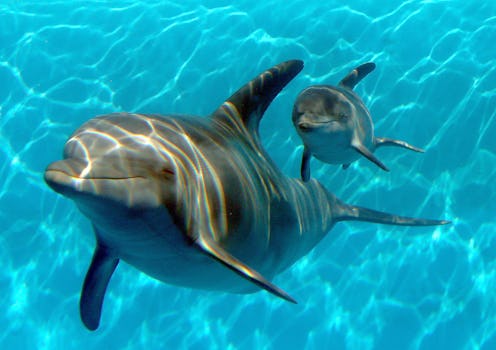News
The Epic Tale Of Crimea's Combat Dolphins
As it turns out, it's not just humans in Ukraine who've been swept up in the tides of Russian geopolitics. That same fate has befallen Crimea's combat dolphins, which the country is demanding Russia return after their seizure in post-annexation Crimea. If you're still reading back that last bit in bewilderment at the words "combat dolphins," well, you can be forgiven.
The dolphins haven't been transported to Russia just yet, still sitting in an aquarium in the disputed city of Sevastopol — the Russians and Ukrainians both still lay claim to the city, which became a hotbed of marine research in the years following World War II, military-applied dolphin training included. The program was founded and maintained throughout Ukraine's initial decades-long history under the control of the Soviet Union, and it ultimately continued into the country's history as an independent, autonomous state. Now, of course, the stakes in Ukraine have changed, and Russia ia again coming calling to check in on the old dolphin squadron.
It's fair to wonder what exactly a dolphin can do that benefits a military operation. And moreover, in the age of heightened awareness of animal rights and cetacean suffering, is it even ethical to do so?
The Program's Been Decades in the Making
It's easy to understand why ownership both of this training program, and of the resulting tactical dolphins themselves, would be such a hotly-contested point between Ukraine and Russian — this is a struggle over a solid half-century of research.
As The Telegraph reports, the specific capabilities of the dolphins are uncertain, mixed up amid possible myths. Various frightening military applications having been attributed to them, from grisly suggestions like suicide bombing, to somewhat more benign tasks like mine detection.
This much is clear, however, as has been highlighted in the U.S. by the animal rights movement, and documentary efforts in recent years like Blackfish and The Cove — dolphins are uniquely intelligent and social animals, and their use for these purposes would rightly be considered controversial.
The Dolphins Could Be the Subject of Misinformation
Obviously, stories about dolphins with blades of guns strapped to them seem in some way too strange to be true, and indeed, the lack of clarity during Sevastopol's Soviet years and the secretive nature of the program even under Ukrainian control means some of the dolphins' abilities reside firmly in the realm of rumor. In 2000, the BBC reported that the "kamikaze" dolphins had been sold to Iran, owing to the deteriorating conditions they faced in the former Soviet state. In 2012, the Ukrainian program was launched once again, foreshadowing the current standoff.
For what it's worth, however, an employee of the Sevastopol dolphin center, as reported by The Telegraph, told Russia's RIA Novosti that the next step in this dystopian underwater odyssey could be a great deal more intense — training them for direct combat, with mounted knives and guns.
3. Ukraine & Russia Aren't the Only Ones — USA, USA!
The dolphins of Ukraine can take some solace in knowing it's not just them forced into this pressing military service — the program in Sevastopol is widely considered one of only two such programs in the world, with the other being run by the United States Navy out of San Diego, California. The American program is just as old as the Soviet one, founded in 1959, a peculiar new concept of naval defense that springing from the early-Cold War era.
It's not strictly dolphins, either, as the program tested different marine mammals before settling on the bottlenose dolphin and the California sea lion as best-suited for their purposes. Similar to how the practice of dolphin captivity for entertainment allegedly played a role in the death of a SeaWorld trainer, the subject of 2013's documentary Blackfish, the San Diego dolphin program has also been marred by a human fatality. In March 2014, contractor Coll Perske died while training the sea mammals. His death was ruled an accidental drowning by the Navy, who said he had no contact with the mammals in the moments prior to his death.
So basically, for all the things the U.S. and Russia haven't seen eye-to-eye on in recent years, there's one area we find some rare agreement on — turning hapless dolphins into tools of war.
